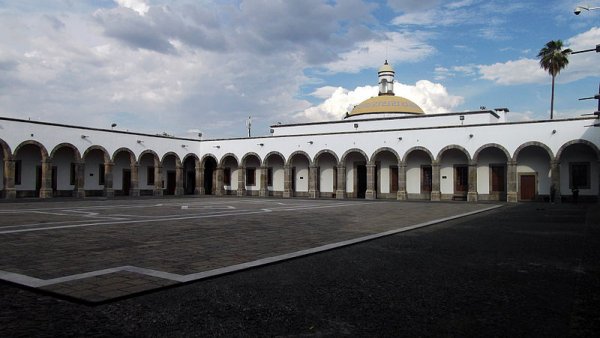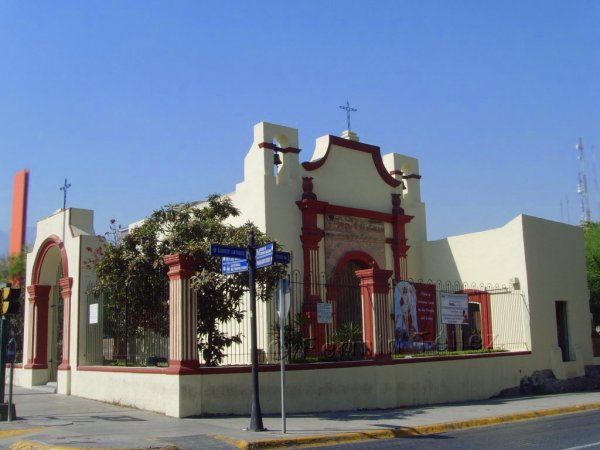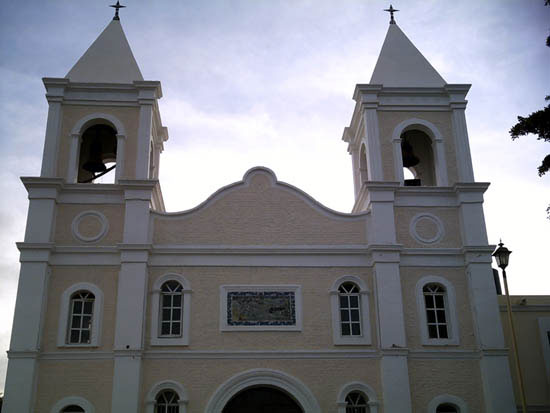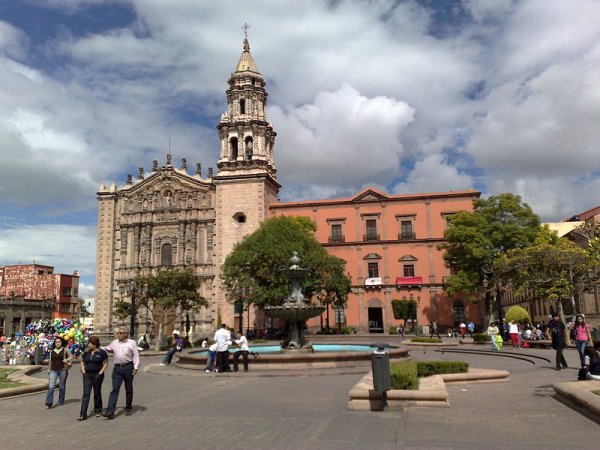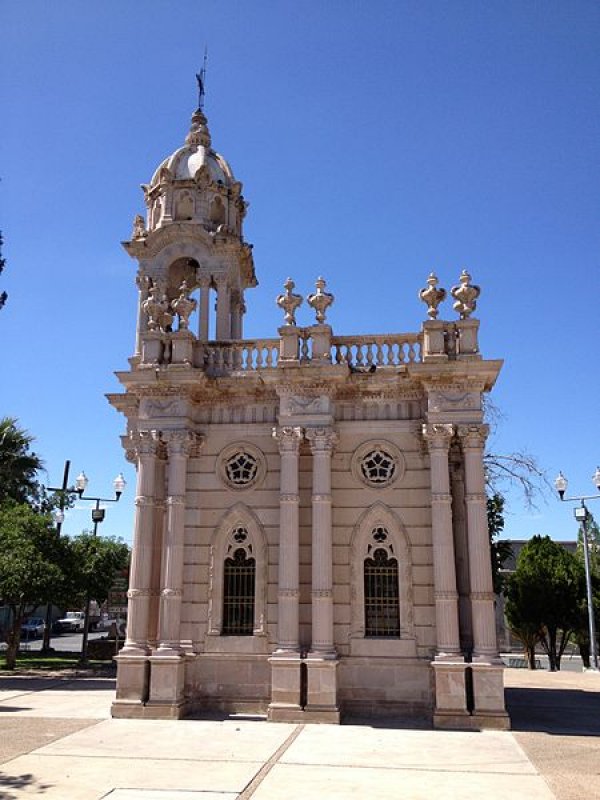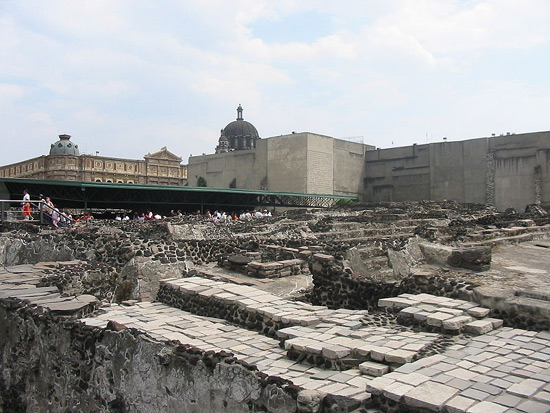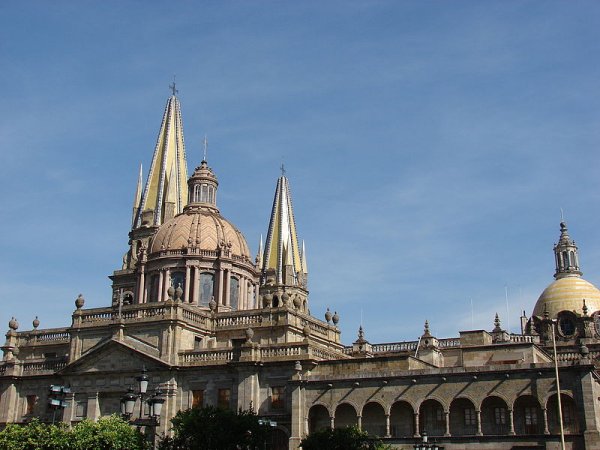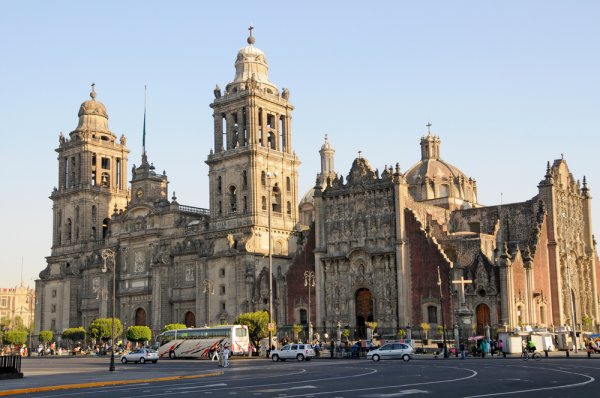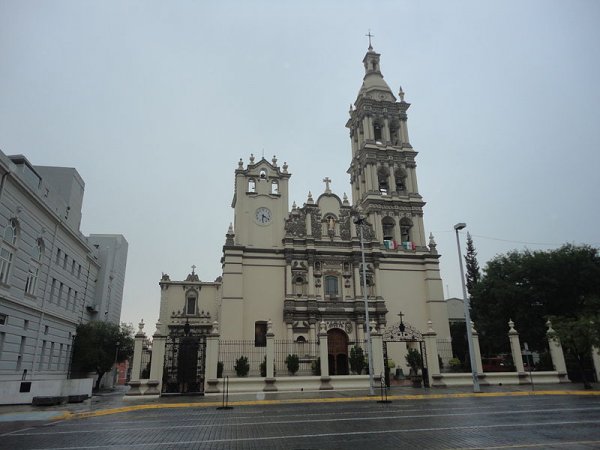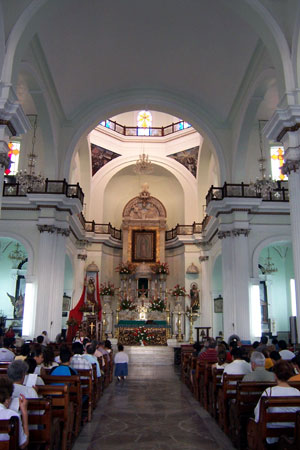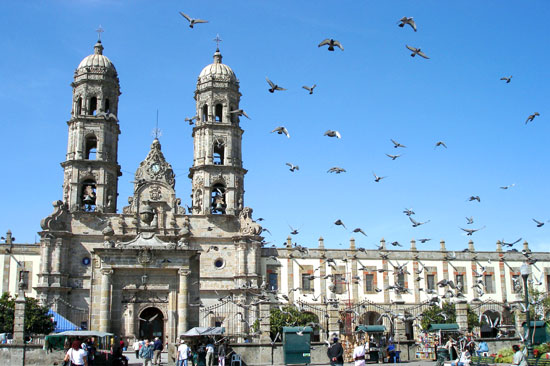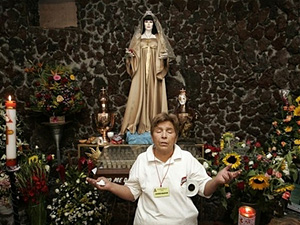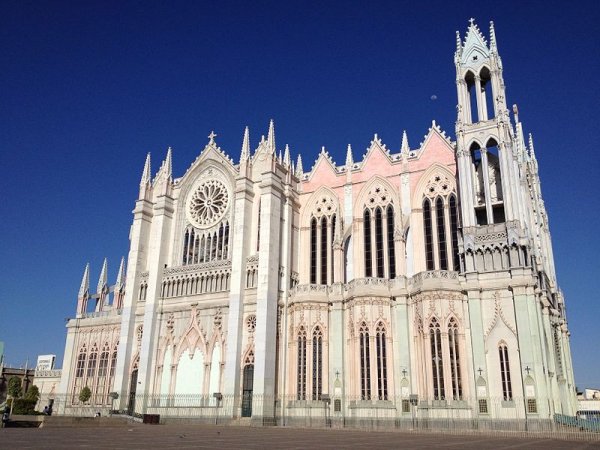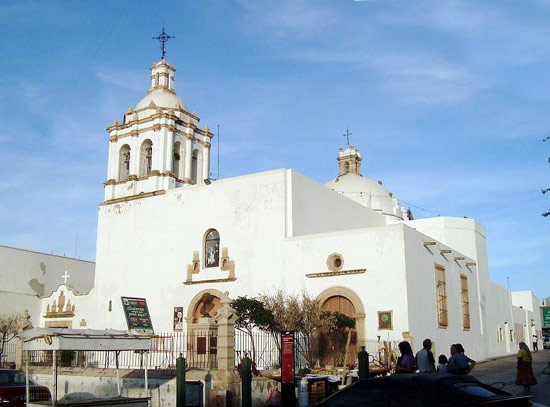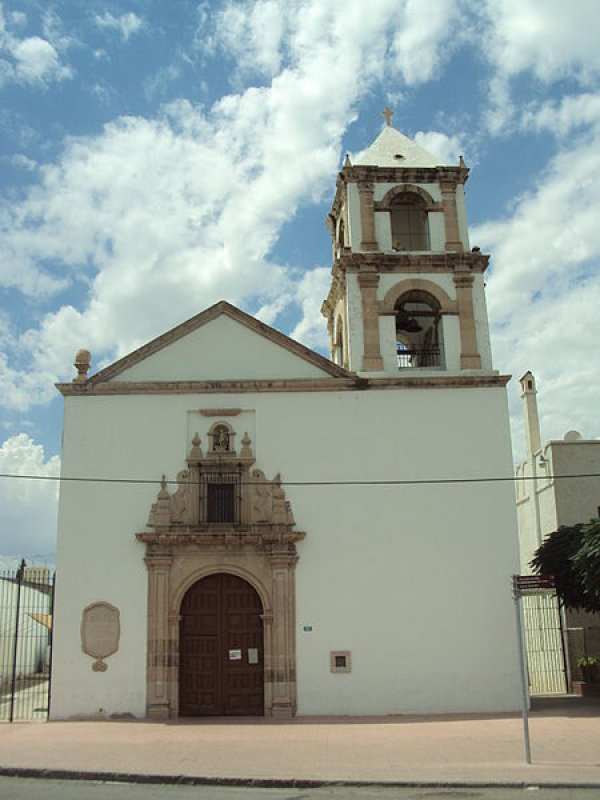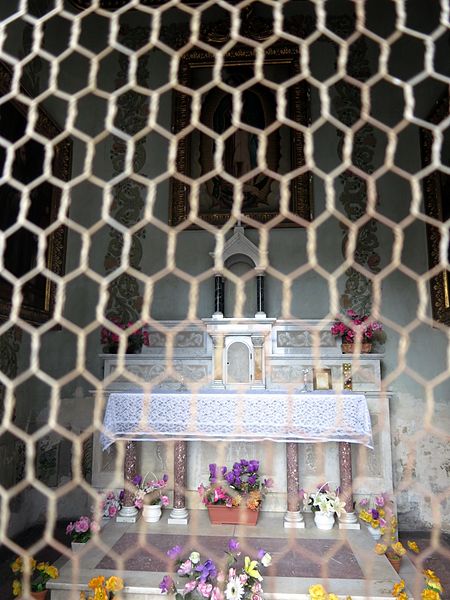Points of Interest
Basilica Cathedral of Our Lady of Light
Pedro Moreno Zona
Centro León, Mexico
The imposing, baroque León Cathedral dates back to the mid-1700s, although it was not completed until well into the 19th century. Inside the religious structure are spiritual artworks designed to protect The Virgin of Light, the city's patron saint. For history buffs, there are cathedral and surrounding grounds tours that delve further into the history and religious significance of the neighborhood.
Basilica of Our Lady of Guadalupe
Plaza de las Américas núm. 1
Mexico City, Mexico
The basilica, regarded as one of the most important Catholic pilgrim centers in the world, is dedicated to St. Juan Diego, the patron saint of Mexico. Legend has it that the Virgin Mary appeared to the saint (an Aztec who converted to Catholicism), asking him to build a church at the site. The original tilma (apron) of St. Juan Diego with the icon of Our Lady of Guadalupe is preserved in the church. Built between 1974 and 1976 by the Mexican architect Pedro Ramirez Vásquez, the basilica has a circular floor plan and nine chapels that can accommodate up to 40,000 people.
Bethlehem Cemetery
Belem 684 El Retiro
Guadalajara, Mexico
Opened in 1848 and closed to new burials in 1896, this cemetery originally contained two discrete areas, one for the common people and one for the wealthy. Only the latter section remains. Grandiose tombs of elaborate design fill the space and many of the city's most important figures reside in a mausoleum under the chapel. Numerous legends of ghosts and vampires haunt the cemetery, making this an ideal place for a nighttime tour.
Cabañas Hospice
Calle Cabanas 8, Plaza Tapatia
Guadalajara, Mexico
Founded in 1791 as a combination workhouse, hospital, orphanage, and almshouse and completed in 1829, the 164-meter (538-ft) long building now houses Instituto Cultural Cabañas, as well as affiliated schools for arts and crafts. The design features a series of conjoined 7.5-meter (25-ft) high, single-story structures circling a 15-meter (50-ft) domed chapel and 23 courtyards. In the 1930s, Mexican muralist José Clemente Orozco painted a series of monumental frescoes on the interior walls. One of these, the spectacular El Hombre de Fuego (The Man of Fire), adorns the chapel dome.
Cathedral of Chihuahua
Catedral de la Santa Cruz Plaza de Armas
Centro Chihuahua, Mexico
Built with pink quarry stone, the churrigueresque-style structure is the seat of the Archdiocese of Chihuahua. Completed over a period of 100 years beginning in 1725, the three-nave building, with two identical 40-meter-tall (131-foot-tall) towers, features an impressive dome resembling the one on Saint Peter's Basilica in Rome. Statues of the 12 apostles were added in the 19th century. The cathedral organ was brought from Germany, as was the octagonal stained-glass window that graces the facade, while the kiosk and sculptures in the adjacent Plaza de Armas originated in Italy. The Museo de Arte Sacro (Museum of Religious Art), located in the basement, holds many pieces of baroque art.
Chapel of Sweet Names
Dulces Nombres Matamoros y Dr. Coss Zona
Centro Monterrey, Mexico
Originally built in 1830, this small church is the second oldest in Monterrey after the Metropolitan Cathedral. In 1938 the government declared it part of the "patrimonio nacional," making it an official historic landmark. Even so, the church fell into disrepair and had to be restored in 1945. It escaped demolition because of its unique combination of architectural and artistic styles, including Franciscan and Tuscan. During the day, the church is open to the public, although it is an official church of the archdiocese and Mass is held regularly. It features large murals carved in stone blocks and a simple façade. The church is self-contained in a wrought-iron fence with a shady plaza that invites the weary traveler to sit and recover from the heat.
Christ the King Church
Iglesia Cristo El Rey Margaritas 15
Cancún, Mexico
Cancún's first Catholic Church features open-walled architecture and an overall noteworthy modernist design. Experience an authentically Mexican Catholic Mass, or, if you'd like to follow along better, you can attend Iglesia del Cristo Rey's English-language mass, held every Sunday at 9 a.m. (Spanish mass is at 7 p.m. on Saturdays.)
Church of San José
Iglesia San José Zaragoza at Morelos Plaza Mijares
San José del Cabo, Mexico
The imposing Iglesia San José, which affectionately watches over San José del Cabo's main square, replicates the original mission church once built here. Also known as the Parroquia San José and the Misión de San José del Cabo Añuití, this Catholic church was first erected by the Jesuit priest Nicolas Tamaral in 1730. Tamaral and his fellow missionaries evangelized the indigenous peoples, who eventually rose up in 1734, torturing and killing Tamaral himself inside the very church he built. A mosaic outside the church, positioned above the front door, depicts this uprising and Tamaral's martyrdom. The current structure was built after the hurricane of 1918, and retains some of the original church's structure, including some of its walls. Services are held here seven days a week, an English-language Mass is held on Sunday, and visitors are welcome every day.
Former Carmen Convent
Ex Convento del Carmen 638 Juárez Avenue
Guadalajara, Mexico
This former convent, which was completed in 1758, became a cultural center and museum after the building was restored in the 1990s. The landmark building hosts a wide range of events including theatrical and dance performances, classical and Mexican music concerts, lectures, and art exhibitions. The center courtyard holds a quarry fountain, a bronze bust of Mexican composer José Rolón, and a statue of Roberto Cuéllar García, a Catholic priest who founded an orphanage and school for impoverished children known as the Ciudad de los Niños (City of Children). The site also houses a contemporary sculpture by celebrated Mexican artist and Guadalajara native Alejandro Colunga Marín.
Francisco "Pancho" Villa's Mausoleum
Mausoleo de Francisco Villa Nicolás Bravo y Calle 5
Centro Chihuahua, Mexico
Though this wedding cake of a crypt was built to house Pancho Villa's remains, the body was instead buried in the city of Hidalgo del Parral, from which it was later transferred to Mexico City. The mausoleum nonetheless remains as a monument to the revolutionary leader. The highly ornate facade features an arched gate and six 8-meter-tall (25-foot-tall) sculpted columns. The roof is topped by a 5-meter (16-foot) cupola supported by additional columns.
Great Pyramid of Tenochtitlan
Templo Mayor Seminario 8 Centro Histórico
06060 Mexico City, Mexico
Templo Mayor was the most important temple in Tenochtitlan, the Aztec city located on the site where Mexico City now stands. Built in the 14th century in honor of Huitzilopochtli, the god of war, and Tlaloc, the god of rain and agriculture, the temple was destroyed during the Spanish conquest. But the discovery of an Aztec carving in 1978 led to excavation of the ruins, which are now viewable from platforms overlooking the pit in which the ruins sit. The excavation also holds the Casa de los Caballeros Aguila (House of the Eagle Knights), which served as the home for an elite group of Aztec warriors. A museum adjoining the site holds some 7,000 artifacts discovered during the excavation as well as a model of the original pyramidal-shaped temple.
Metropolitan Cathedral of Guadalajara
Catedral Metropolitana Avenida 16 de Septiembre
Guadalajara, Mexico
Formally known as the Cathedral of Guadalajara and Catedral de la Asunción de María Santísima (Cathedral of the Assumption of Holy Mary), this massive church was completed in 1618. Its two 60-meter (197-ft) towers rose up in 1854 to replace those destroyed by an earthquake in 1849. The cavernous interior with its large central dome will take your breath away. Designed in the Renaissance style with neo-Gothic towers, the structure features stained glass windows imported from France, altars of marble and silver, and a huge pipe organ that is among the largest in Mexico. The cathedral houses the relics of Santa Inocencia as well as the heart of a former Mexican president.
Metropolitan Cathedral of Mexico City
Catedral Metropolitana de la Ciudad de Mexico S/N Plaza de la Constitución Centro Histórico
06000 Mexico City, Mexico
Located on Mexico City's central square, this Spanish baroque cathedral is the largest in the western hemisphere. Its construction spanned the period between 1567 and 1788. The church has 64-meter-tall (210-foot-tall) neoclassical bell towers, which hold 18 bells, and a central dome designed by the Spanish architect Manuel Tolsa. The church stands on a lake bed and there has been considerable sinking owing to the soft clay subsoil. Underground tunnels and scaffolding have been added to stabilize the building. The cathedral has a vast collection of prized works of art from the colonial era, including paintings, altarpieces, and statues in full graphic color.
México City México Temple
Avenida 510 # 90 Colonia San Juan de Aragon
07950 México City, México
This temple of Jesus Christ of Latter-day Saints (commonly known as the Mormons) was dedicated in 1983 by Gordon B. Hinckley. The church stands on an area of 2.3 hectares (7 acres) and has a unique design that is based on ancient Aztec and Mayan architecture. It has a white cast stone exterior ornately decorated with ancient Mayan designs. The temple was the first of 12 Mormon temples built in México and has four ordinance rooms and 11 sealing rooms.
Monterrey Metropolitan Cathedral
Catedral Metropolitana de Monterrery Zuazua #1100 Sur Zona
Centro Monterrey, Mexico
By far the oldest church in Monterrey, the Metropolitan Cathedral also took the longest to build—165 years. Construction of the baroque cathedral began in 1626 but was not finished until 1833. The main tower was built from 1891 to 1899; in 1940 the archdiocese added a commemorative garden that faces Calle Juarez. Because it took so long to build, many Catholic leaders have left their mark on the cathedral. As a testament to its strength and solid construction, the cathedral has served as a small fort in more than one war. The cathedral, now the seat of the Archdiocese of Monterrey, is open to the public from 11 a.m. to 7 p.m. Monday through Saturday and 9 a.m. to 9 p.m. on Sunday.
Our Lady of Guadalupe Church
Calles Hidalgo 370
48300 Puerto Vallarta, Mexico
Though frequently referred to as the cathedral, Our Lady of Guadalupe is actually only a church since the Roman Catholic Diocese has no bishop in Puerto Vallarta. Constructed over a 12-year period beginning in 1929, the baroque-style brick building features hand-carved columns and detailed molding inside, topped by a crown modeled after that of Mexico's Empress Carlotta. The original crown was destroyed in an earthquake in 1995 and replaced with a temporary fiberglass copy. In 2010, a permanent replacement made of metal alloy and synthetic resin was installed. The church holds a special place in Vallartans' hearts because the December 12 feast day of Our Lady of Guadalupe coincides with the city's date of incorporation. From December 1 through 12, nightly processions with floats and bands head from various points throughout the city to the church. On the 12th, the processions continue for 24 hours.
Our Lady of Zapopan Basilica
Eva Briseno 152 Zapopan
45100 Guadalajara, Mexico
With a central abbey dating back to the latter part of the 17th century, this church features classical Spanish architecture with superb vaulted ceilings. Many regard a 16th-century statue of the Virgin Mary as the structure's centerpiece. Every October the basilica, considered the holiest in western Mexico, hosts the Romeria de la Virgen de Zapopan (Virgin of Zapopan Pilgrimage) celebrations, during which thousands of locals partake in daily processions to honor Guadalajara's patron saint. The processions traverse the 8-kilometer (5-mi) route from the Catedral Metropolitana in Guadalajara to Zapopan. The church also contains a museum dedicated to the arts and crafts of the Huichole, an indigenous people located primarily in the states of Jalisco and Nayarit, whose beaded sculptures and jewelry have become highly valued.
Santa Muerte Sanctuary
Nicolás Bravo 35
Venustiano Carranza, Mexico City, Mexico
Santa Muerte Sanctuary will interest believers in the folk saint whose name translates to “Our Lady of the Holy Death.” Those familiar with Mexico’s Dia de los Muertos (Day of the Dead) holiday, with its iconic skeleton imagery, will feel comfortable with the idea of a church devoted to La Sante Muerte. She is a popular cult idol in Mexico, second only to Santa Maria de Guadalupe, and despite being officially rejected by the Catholic Church, the reverence and worship of Sante Muerte is widespread. Personifying death, the saint is embraced by Mexico’s poor and others who are affected by the country’s drug related violence and class struggle. She is not considered Satanic but a follower of God, with death a necessary and unavoidable part of life’s cycle. Reverence for gods and goddesses of the underworld is a native tradition that pre-dates Spanish settlement in Mexico, and seeking to connect with the dead is not viewed as morbid but a way to remember and celebrate the lives of those who have passed. The skeleton saint, dressed as an angel, presides over the altar of Santa Muerte Sanctuary, where services are held three times a week.
Temple of Atonement of the Sacred Heart of Jesus
Francisco I. Madero 721
Centro León, Mexico
Construction of this stunning Gothic temple began a century ago and it's still underway. Besides its fantastic façade and stunning stained glass windows, there are catacombs where hundred of people currently are resting in peace. Underground tours begin in the early morning and conclude by 1pm
Temple of Saint Francis
Templo de San Francisco Libertad 15
Centro Chihuahua, Mexico
Completed in 1741 and designed in a simple Spanish Mission style with minimal exterior decoration and a simple, squat bell tower, this is the oldest church in the city. Inside, the wooden altars are decorated with original oil paintings that were added in the 19th century. The indoor enclosure is made of silver Latin cross beams and topped by a dome. An adjoining convent, now demolished, was the original burial site of Father Miguel Hidalgo, though his body was later transferred to Mexico City.
Temple of Saint Rita de Casia
Templo de Santa Rita de Casia 1 de mayo 1640
Centro Chihuahua, Mexico
Dedicated to Santa Rita, the patron saint of Chihuahua, this small church began as a private shrine and chapel built by the heirs to a metal forging fortune. The facade features a pink quarry stone entrance arch flanked by semicircular pilasters supporting a frieze and cornice. The austere interior has two rows of simple wooden benches and a roof supported by plain wood beams. Beneath a small image of Santa Rita on the wall is an urn for donations from devotees in gratitude for miracles performed.
Templo Expiatorio
López Cotilla 935
Guadalajara, Mexico
Though construction started in 1897, this monumental neo-Gothic church was not opened to the public until 1931 and not completed until 1972. At the request of Archbishop Pedro Loza y Pardave, Italian architect Adamo Boari modeled the structure after Italy's Orvieto Cathedral, with large stained-glass windows, three naves, and a soaring bell tower. In keeping with the construction techniques of the Middle Ages, the structure consists solely of stone without the use of cement or iron. Beneath the church, seven crypts are the final resting places of 1,919 people. Visitors are permitted to explore the maze of catacombs, which are dark and narrow.
Copyright © 1993—2024 World Trade Press. All rights reserved.

 Mexico
Mexico 

